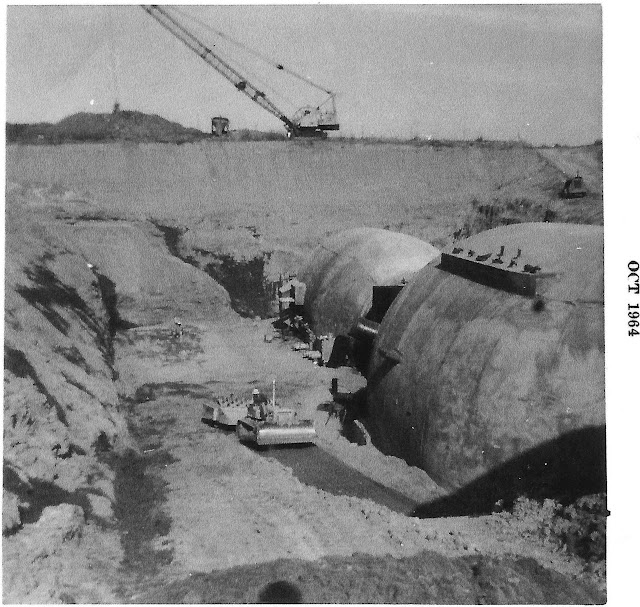Monuments of architecture and creators of the transcendence - Cenotaphs of Doom (Part 8)
(All images. Titan II and Mintueman missile bases. Public Domain)
When we look at these Doomsday structures, more so the engineering aspects that represent the end, yet at the same time they also manifest, as far as a structural integrity entails, a devised concept in its continued longevity without the biodiversity. I feel this holds an interesting aspect regarding these left over cataclysmic relics. When the statistician and mathematician Hugh Everett released the Mutually Assured Destruction (MAD) calculation he did so knowing that a nuclear war, would lead to the annihilation of human civilization. Yet, when the MAD principle was instigated at the height of the cold war, it was done as a failsafe perspective which in its accepted rationale of the destruction of human life through a thermal-nuclear exchange – no one would win, thus the very idea of a global nuclear war becomes the ultimate deterrent. Although interestedly the notion of Mutually Assured Destruction undermines the very purpose of human evolution and its motivation to survival as the fittest species.
There is a cryptic metaphor expressed in a visual perpective externally and internally from these reinforced 'doomsday' buildings, that in its construction they were not built to protect human beings, but rather the machinery that lies within, encapsulated by these Cenotaphs of Doom, from telecommunication networks to the seeds of plants stored deep within a vault inside the Arctic circle. But, it is this paradox of reinforced construction to protect the inanimate, also holds an irony, whist shielding these machines; which in turn leads to a duality, that not only represents the doomsday structure in all of entirety, but also by its definition contributes to the machinations of destruction. The eradication of humanity by humanity via its protected mechanical systems, that as mentioned, are held within and an human engineered construct, encased within its concrete and steel sheaths are the true harborers of destruction. Thermonuclear missiles. We previously looked at the 20th Century relics of the abandoned SAFEGUARD missile program of the mid 1970s, within its strange yet familiar shape of a Pyramidal structure left in stark fields of North Dakota, a bunker like complex with its plethora of hidden underground missiles, all poised to destroy, in theory, of an oncoming attack of Intercontinental Ballistic Missiles or ICBMs from Russia. However, it would be the retaliatory strike that would be the most extraordinarily devastating event in the history of humanity, instigated solely from these underground missile bases dotted around the rural parts of America. They are the Minuteman and Titan II missile silos.
There is an absurdity, in an obvious sense, of nuclear war, that in its ultimate destructive power via a thermal nuclear exchange between the superpowers, these destroyers of worlds were largely hidden from sight within their reinforced underground facilities, to which the morbidity and surreal aspect to this killing technology, particularly when the Titian II was later modified for peaceful purposes, was in full view of the public, open and seemingly vulnerable on its launch pad – as it assisted NASA's Gemini space program which was the prelude to the Apollo rockets that took humanity to the moon. But, the American government like the Russians during the cold war, needed to develop secure missile complexes, spread throughout the rural and desolate areas of the United States – concealed from the many civilians who lived near these bases. With some of these complexes decommissioned, they now have become tourist destinations, reminders, in its strange reflection of a past resonance. But, a new Cold War may have already been activated as the stockpiles of both Russian and American nuclear missiles stay within the quota of destroying all of civilization. The tensions, although not as prolific as they were 50 years ago, remain and so do the Cenotaphs of Doom.












Comments
Post a Comment